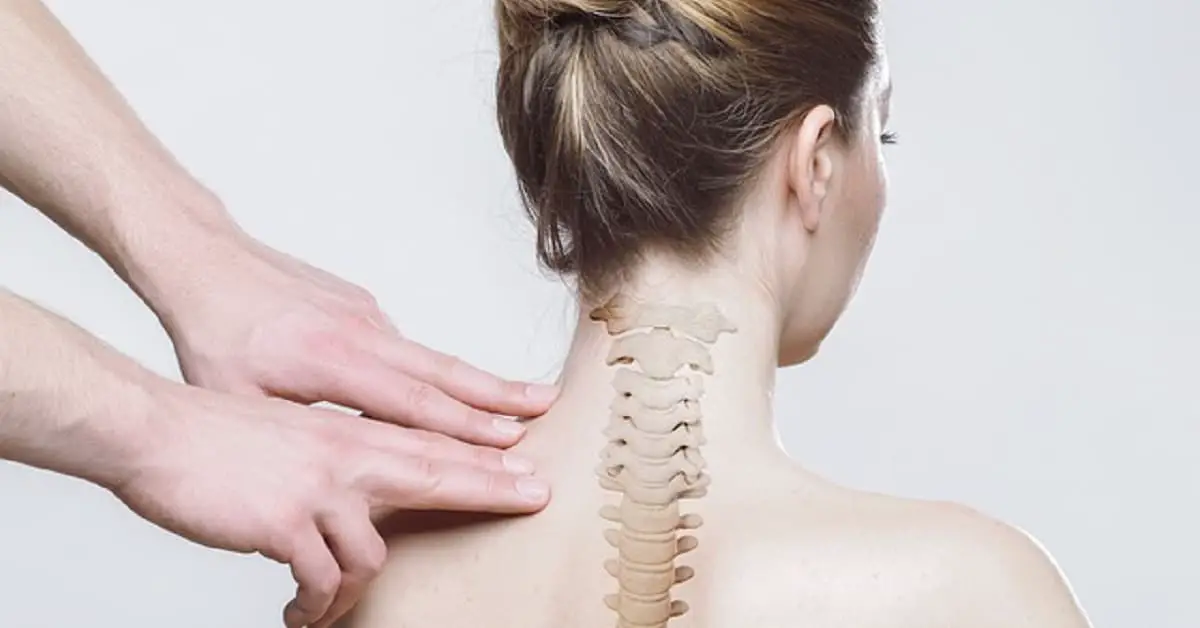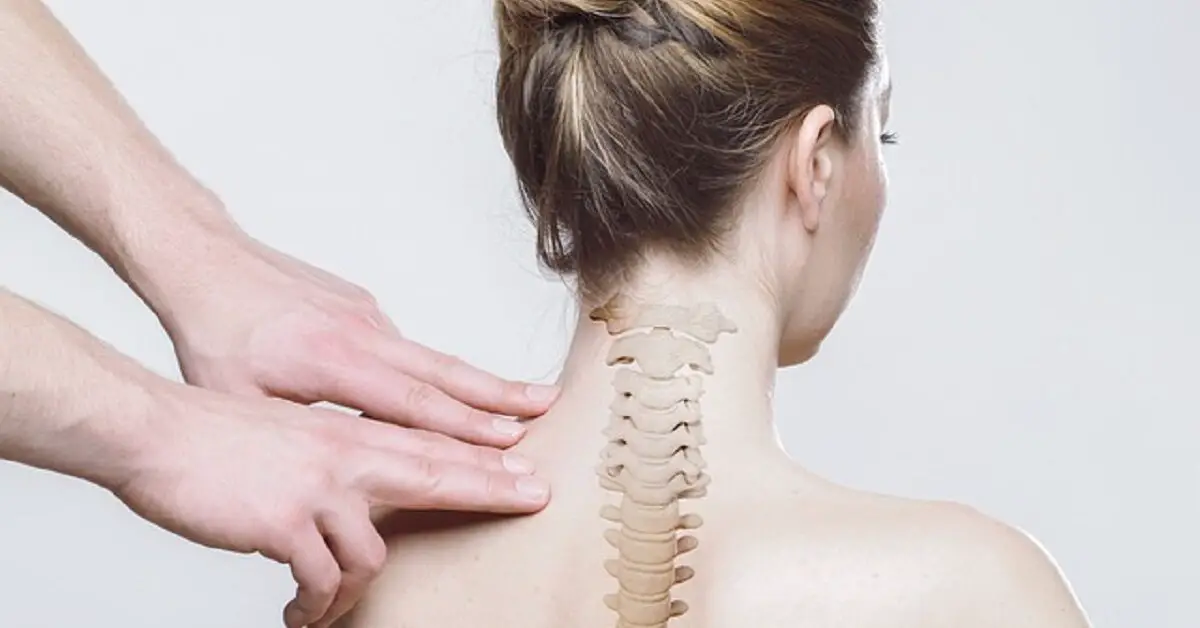
Pressure points (acupoints) for neck pain are points on the body where stimulation may be applied to relieve pain or improve various health conditions affecting the neck.
Acupressure involves applying stimulation to pressure points (acupoints) using compression or massage with the fingers, palm, or a hand-held device.
Acupuncture involves stimulating pressure points (acupoints) by inserting thin needles.
This article focuses primarily on the application of pressure points in acupressure. However, we shall make frequent references to acupuncture because both disciplines overlap due to the shared concept of pressure points.
Neck pain may be associated with muscle tension, stiffness, spasms, strain, inflammation, and increased nerve sensitivity (read about the common causes of neck pain).
This article walks you through the 17 pressure points identified by practitioners of acupressure as effective for treating neck pain.
We describe each acupoint and provide links to illustrations and videos that show how to find the pressure points. We also explain how to perform acupressure massage.
Contents:
17 pressure points for neck pain:
- Feng Chi/”Wind Pool” (Gallbladder 20, GB 20)
- Jian Jing /”Shoulder Well” (Gallbladder 21, GB 21)
- Houxi/”Back stream (Small Intestine 3, SI 3)
- Shen Shu/”Kidney Shu” (Bladder 23, BL 23/Urinary Bladder 23, UB 23)
- He Gu /”Union Valley” (Large Intestine 4, LI 4)
- Zhong Zhu/”Central Islet” (Triple Energizer 3, TE 3, TH 3)
- Tian Zhu/”Celestial Pillar” (Urinary Bladder 10, UB 10 or Bladder 10, BL 10)
- Da Zhui/”Great Hammer”(Governing Vessel 14, GV 14
- Hua Tuo Jia Ji acupoints/”Hua Tuo’s Sides of the Spine”
- Tian Zong/”Celestial Gathering” (Small Intestine 11, SI 11)
- Jian Zhong Shu/”Central Shoulder Shu” (Small Intestine 15, SI 15)
- Kun Lun/”Kunlun Mountains” (Bladder 60, BL 60 or Urinary Bladder 60, UB 60)
- Lie Que/”Broken Sequence” (Lung 7, LU-7)
- San Jiao 15 or Tian Liao/”Celestial Bone Hole” (Triple Heater 15, TH 15, or SJ 15)
- Jian Liao or San Jiao 14/”Shoulder Bone Hole” (Triple Heater 14, TH 14, or SJ 14)
- Naokong/”Brain cavity” (Gallbladder 19, GB 19)
- Jian Wai Shu/”Outer Shoulder Shu” (Small Intestine 14, SI 14)
What are pressure points (acupoints)?
Does acupressure work?
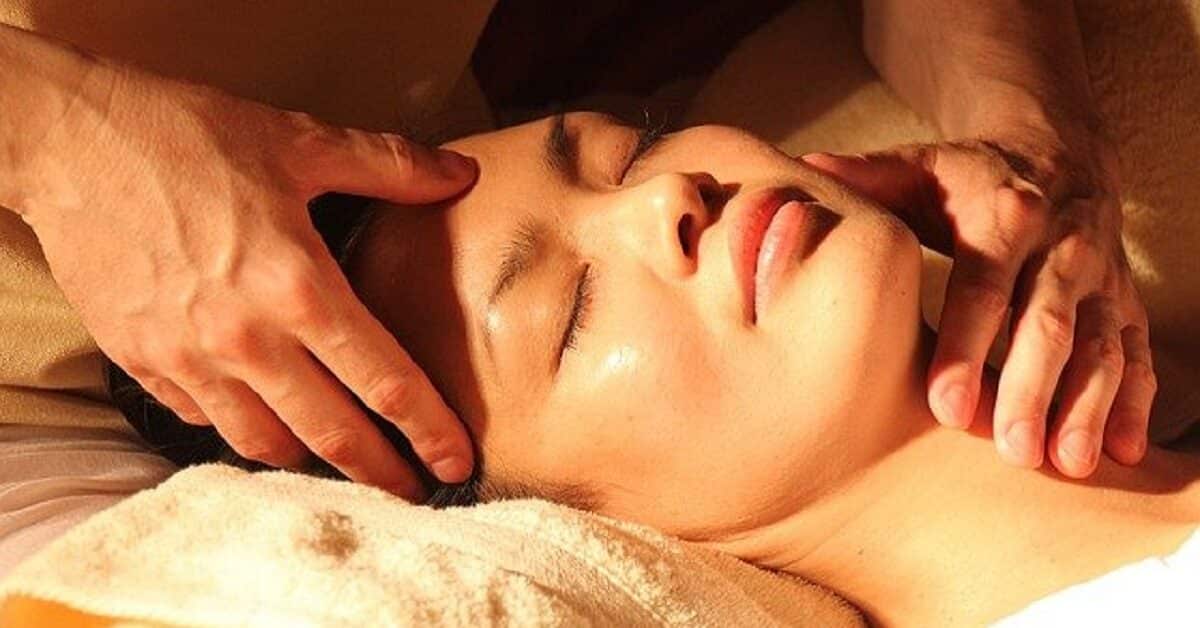
This article is solely for informational and educational purposes.
It isn’t to prescribe self-treatment. We advise you to consult your healthcare provider if you have persistent neck pain.
The concept of pressure points comes from the practice of acupressure and acupuncture that originated in ancient Traditional Chinese Medicine (TCM) (Mehta et al., 2017).
Traditional Chinese Medicine dates back 3000 years to the early Zhou dynasty (c. 1050–221 BCE), and possibly earlier in the Shang dynasty (c. 1600-1050 BCE).
The techniques of acupressure and acupuncture are widely applied today, and many believe it works for them.
Some studies suggest that acupressure may be effective for treating pain (Chen and Wang, 2014; McFadden and Hernandez, 2010; Godley and Smith, 2020; Mohvahedi et al., 2017; Monson et al., 2019).
Susana and associates (2021) reported that pressure point therapy applied as a complementary treatment improved cervical (neck) pain in the long term.
Trinh and colleagues (2016) concluded in a survey of randomized controlled trials (RCTs) that there was “moderate‐quality” evidence that acupuncture relieved pain better than sham acupuncture.
According to the National Institute of Health’s (NIH) Center for Complementary and Integrative Health (NCCIH), recent research studies suggested that acupuncture may also be effective for treating neck pain.
You may view a video by NCCIH that discusses the evidence supporting the efficacy and effectiveness of acupuncture here.
Berger and co-workers (2021) concluded in a review of current evidence that acupuncture was safe and effective for treating chronic pain, including neck pain and migraine (see also Xiang et al., 2017; Li et al., 2020; Yan et al., 2020; Vickers et al., 2018).
However, other studies found no conclusive evidence that acupressure and acupuncture were effective treatments for conditions such as neck and lower back pain (Yuan et al., 2015; Furlan et al., 2010).
A systematic review of studies published in 2018 for the Agency for Healthcare Research and Quality of the U.S. Department of Health and Human Services concluded that regarding chronic neck pain, acupuncture achieved only a slight short-term improvement in function but no improvement in pain compared with sham acupuncture and conventional treatments.
In conclusion, there is currently no scientific consensus on the effectiveness of acupressure (and acupuncture) for treating chronic pain and other health condition.
How to do acupressure massage
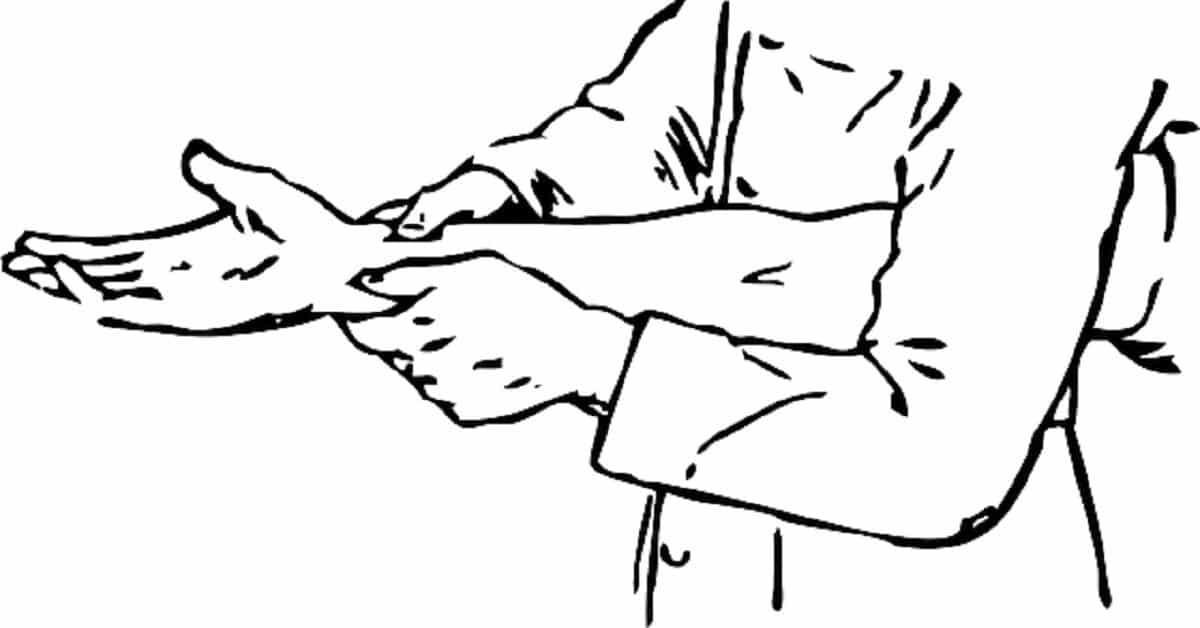
Generally, acupressure involves applying pressure, compression, or massage to the prescribed pressure point for a few minutes once or multiple times daily as needed.
Acupressure massage involves applying deep and firm pressure in a circular motion with the fingertips, knuckles, or any convenient and safe-to-use device.
View a video demonstration of acupressure (He Gu, LI 4 point) massage technique here.
Practitioners advise against performing pressure point therapy on areas of the skin with blistering, peeling, rash, redness, swelling, pus, open wounds, and other forms of injury.
Practitioners warn against stimulating certain pressure points during pregnancy because it increases the risk of preterm labor. However, there is no conclusive research evidence supporting this claim (Modloch et al., 2010; Torkzahrani et al., 2016; Smith et al., 2017).
But some studies suggest that acupressure may reduce pain and duration of labor (Kashanian and Shahali, 2009; Dabiri and Shahi, 2014).
17 pressure points for neck pain
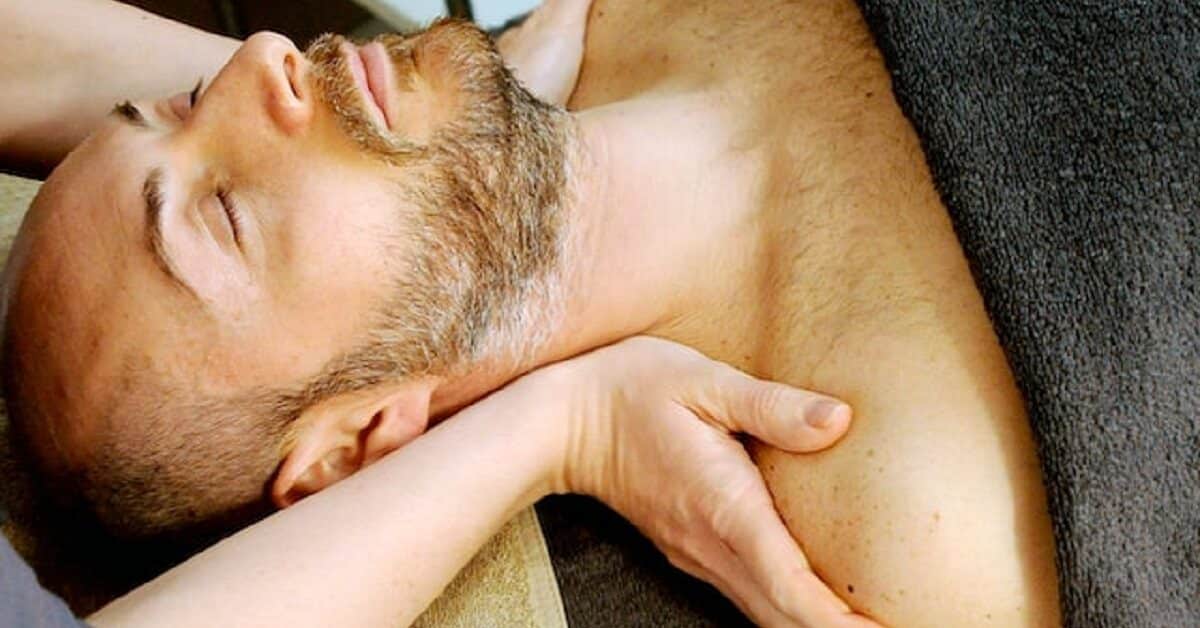
Here is a list of the 17 pressure points for neck pain recommended by acupressure therapists.
1. Feng Chi/”Wind Pool” (Gallbladder 20, GB 20)
Feng Chi (GB 20) is a pair of pressure points for pain on either side of the spine where the base of the skull articulates with the neck (see GB 20 location illustration here; see video demonstration).
GB 20 is on the upper end of the upper trapezius muscles. It is close to and on the same level as the mastoid bones behind the ears.
Acupressure stimulation of Feng Chi relieves neck pain, rigidity, and stiffness (Greenwood, 2021).
It may also be effective for relieving headaches and migraine pain (Zhao et al., 2017), nasal congestion due to allergies, cold and flu symptoms, and eye redness and pain.
2. Jian Jing /”Shoulder Well” (Gallbladder 21, GB 21)
Jian Jing (GB 21) is located posteriorly on the slope of the shoulder trapezius, close to the neck (see visual aid here).
This point is halfway between Da Zhui (GV 14 or DU 14 and the acromion (Sun et al., 2019).
The acromion is the bony projection at the upper end of the scapula (“shoulder blade”) close to the point of articulation with the humerus.
Male subjects may accurately locate Jian Jing (GB 21) by drawing a straight line from the nipple up to the shoulder (Sun et al., 2019).
Stimulating acupoint Jian Jing (“Shoulder Well”) relieves stiff or painful neck and shoulder, according to practitioners (Matsubara et al., 2010; Wen et al., 2012; Susana et al., 2020).
It also relieves pain in the back and improves mobility issues of the arms.
It alleviates headaches and muscle tension in the trapezius.
Massaging Jian Jing (Gall bladder 21, GB 21) may also relieve pain due to swollen lymph nodes in the head and neck (Greenwood, 2021).
Acupressure at GB 21 may increase milk volume in breastfeeding women (Esfahani et al., 2015). It may also relieve mastitis, breast abscess, asthma, and difficulty breathing (dyspnea), and improve persistent cough.
Experts warn against stimulating Jian Jing in pregnant women because it can trigger preterm labor (labor before week 37 of pregnancy).
3. Houxi/”Back stream” (Small Intestine 3, SI 3)
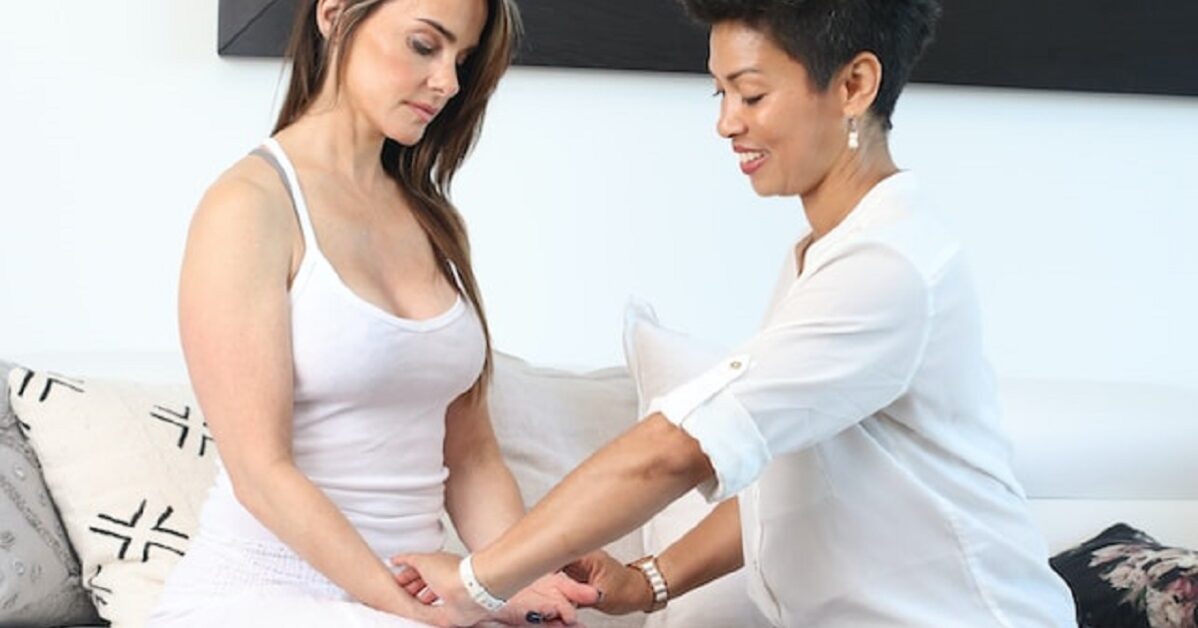
Houxi is on the edge of the hand close to the knuckles of the pinky finger (little finger or digitus minimus)(see visual aid; see video demonstration)
If you bunch your fist loosely, you will notice a crease formed by your skin on the side of your little finger. Houxi pressure point is located just above the crease on the borderline between the skin of your palm and the back of your hand (see an English subtitled Chinese video demonstration here).
Houxi (SI 3) is the Shu-Stream point (wood) of the Yang meridian Small Intestine (SI).
The Small Intestine meridian is one of the 6 Yang meridians or energy pathways in acupressure and acupuncture (there is another set of 6 meridians called Ying).
All Yang and Ying meridians (12 in all) have Five Shu points designated as Jing-Well, Ying-Spring, Shu-Stream, Jing-River, and He-Sea.
Houxi (SI 3), as we mentioned, is the Shu-Stream point (wood) of the Small Intestine (SI) meridian.
[Note: You may consult this chart to help you gain a better understanding of the system for classifying the 12 meridians and associated Five-Shu points]
All Five Shu points have peripheral locations relative to the elbow and knee joints. In other words, they are at the body extremities (hand and feet).
Houxi stimulation relieves chronic and acute neck pain, rigidity, or stiffness. It also relieves cervical sprains and strain, pain in the back of the neck (Sun et al., 2014), and other forms of musculoskeletal pain (Aikawa et al., 2020).
The acupressure point also covers pain in the scapula, arm, hand, shoulder, and elbow. Indications include musculoskeletal pain, headaches, night sweats, fevers, sore throat, and ear disease symptoms, such as dizziness, earache, and tinnitus.
The acupoint also has a calming effect on people with anxiety and manic conditions.
4. Shen Shu/”Kidney Shu” (Bladder 23, BL 23/Urinary Bladder 23, UB 23)
Shen Shu (BL 23 or UB 23) is one of the 12 Back-Shu points on the Bladder channel that correspond with the Zang-Fu organs.
BL 23 (or UB 23) is located (Gao et al., 2017) below the spinous process of the second lumbar vertebrae, close to the kidneys (see illustration; see video demonstration).
The 12 Back Shus are UB 13-15; UB 18-23; UB 25; UB 27-28. They are associated with the Zang-Fu organs: Lung, pericardium, heart, liver, gallbladder, spleen, stomach, San Jiao, kidney, large and small intestines, and urinary bladder.
Theorists believe the Back Shus are points of concentration of the vital forces (Qi/Chi) of the respective Zang-Fu organs.
BL 23 is the Back-Shu point of the Zang-Fu organ kidney. It recharges the kidney’s vitality.
Pressure point Shen Shu (Shenshu) features prominently in acupuncture therapy, but Akbarzadeh and associates (2016) reported that it is also responsive to acupressure manipulation.
Stimulation of Shen Shu relieves chronic lower back pain, sprains, and strains (Akbarzadeh et al., 2016).
It may also be effective for treating rheumatoid arthritis, a chronic autoimmune inflammatory disease associated with progressive cartilage degeneration (Chen et al., 2019). Thus, it may be effective for treating neck pain associated with RA.
Atsushi and associates (2018) reported that acupuncture stimulation of BL 23 prevented bone loss and suppressed bone resorption in rats. Thus, it may play a role in treating pain associated with cervical spine degeneration.
Shen Shu is also commonly used to treat sexual reproductive disorders issues, such as erectile dysfunction (ED), female frigidity, dysmenorrhea (pain during menstruation), irregular menstruation, and amenorrhea (absence of menstruation).
Lin and associates (2005) reported that stimulating Shen Shu (BL 23) alleviated the pain symptoms associated with postmenopausal osteoporosis.
Moxibustion at Shen Shu improved the quality of life of perimenopausal women (Shen et al., 2017).
[Note: Moxibustion refers to the practice of burning moxa (dried mugwort) on or near pressure points for therapeutic purposes.]
Shenshu stimulation also improves ear problems, including tinnitus, infections, and deafness.
Acupressure/acupuncture at acupoint Shenshu is also reportedly effective for treating conditions such as asthma, diarrhea, edema due to fluid retention, and vision problems.
5. He Gu /”Union Valley” (Large Intestine 4, LI4)
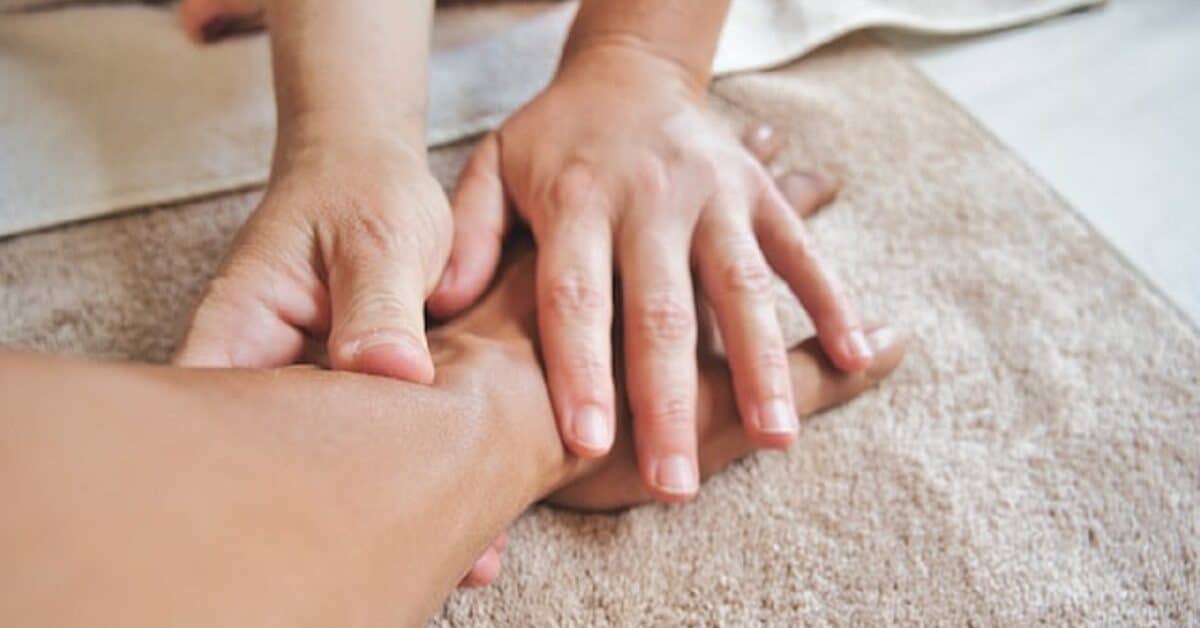
He Gu is a neck pain pressure point on the back of the hand.
You may locate He Gu (LI 4) close to the confluence of the v-shaped fold of skin between the index finger and thumb (see visual aid here and here).
The precise description of its location varies, with some experts locating it midway and others locating it close to the wrist end of metacarpal bone 2 (Kong et al., 2015)
He Gu (Hegu) acupoint is one of the most widely used pressure points for treating pain. It relieves acute and chronic pain in the neck, face, head (headaches), and other parts of the body (Shen et al., 2009; Matsubara et al., 2010; Arab et al., 2017).
It reduces excessive sweating and pain in the mouth, teeth, and nose. It also relieves frontal and sinus headaches, toothache in the lower and upper jaws, acne, and allergic conditions, such as hay fever and rhinitis.
He Gu (L 14) may also be effective for treating peripheral circulation issues (Umemoto et al., 2019), and digestive problems, such as constipation, diarrhea, and menstrual pain.
[Note: Peripheral circulation refers to blood flow to the extremities, such as the fingers and toes.]
Regularly massaging He Gu improves bowel function, according to practitioners.
Experts warn against stimulating He Gue during pregnancy because it could lead to preterm labor.
Massage He Gu by grasping the point between your thumb and index and applying gentle to moderate or firm pressure in a circular motion for a few minutes (see a video demonstration of the massage technique here).
You may repeat the pressure point massage multiple times in a day if the pain symptoms persist.
6. Zhong Zhu/”Central Islet” (Triple Energizer 3, TE 3, TH 3)
Zhong Zhu (Zhongzhu) pressure point is at the base of the web of skin between your little and ring fingers. The position is approximately the depression slightly below the knuckles (see video demonstration).
Massaging Zhong Zhu (Triple Energizer 3, TE 3) through acupressure (or acupuncture) may relieve neck muscle tension or rigidity (Zhu and Liu, 2012; Kwon and Lee, 2018; Di et al., 2014).
Zhong Zhu (also known as San Jaio 3, SJ 3) relieves pain, numbness, and other dysfunctions of the fingers, hands, and limbs due to poor circulation or stroke (Cheng et al., 2011).
Massaging Zhong Zhu may relieve throat, arm, elbow, shoulder, upper back, spine, joints, and head pain.
It also relieves sore eyes, febrile illness, and ear symptoms, such as tinnitus (gushing, ringing, or thumping noise in the ears) and deafness (Luo et al., 2009; Chang et al., 2021).
7. Tian Zhu/”Celestial Pillar” (Urinary Bladder 10, UB 10 or Bladder 10, BL 10)
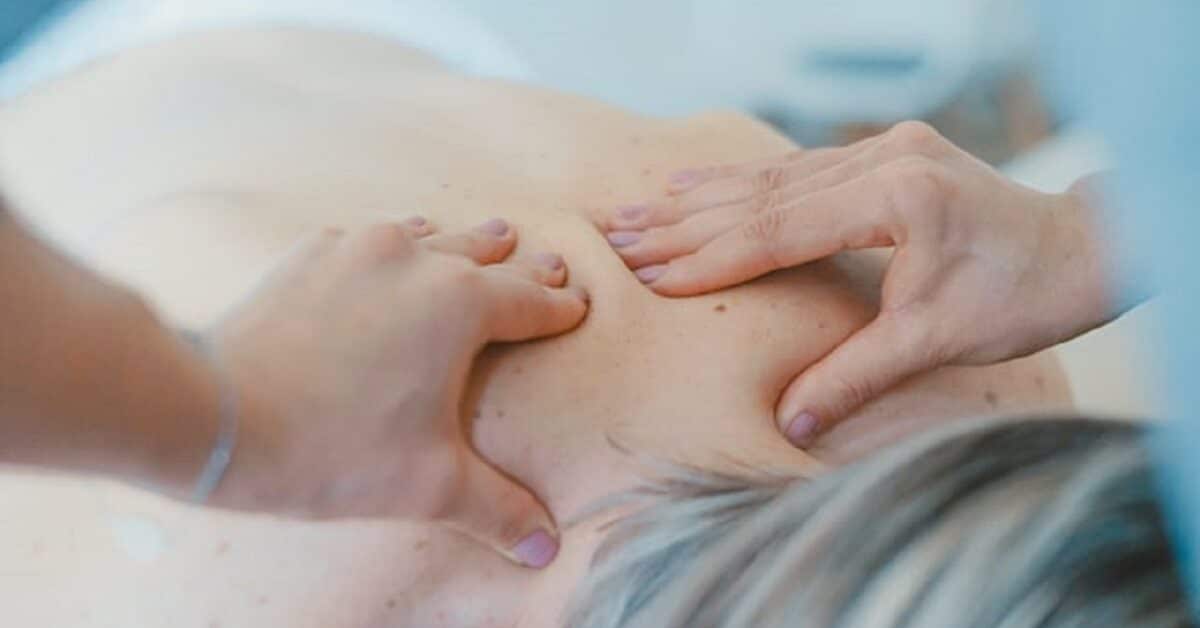
Tian Zhu is a pressure point on the nape of the neck. It is displaced slightly from the spinal midline at the base of the skull (see video demonstration).
You may precisely locate Tian Zhu on either side of the spinal midline, between the first (atlas) and second cervical vertebra. The position is close to Feng Chi. However, Feng Chi is closer to the mastoid bones behind the ear lobes.
Stimulating acupoint Tian Zhu may relieve neck pain, stiffness, or rigidity. It may also relieve headaches, upper back and shoulder pain, dizziness, seizures, sore throat, and nasal congestion (Greenwood, 2021).
It relieves eye pain and vision problems. It also has a calming effect on excitable individuals and alleviates manic episodes, seizures, and epilepsy.
8. Da Zhui/”Great Hammer”(Governing Vessel 14, GV 14
Da Zhui coincides with the location of the 7th cervical vertebrae (C7) at the back of the neck. GV 14 (also designated DU 14) is precisely in the depression just below the prominently protruding spinous process of C7 (see video demonstration).
The 7th cervical vertebrae (C7) is at the base of the neck. It is at the point where the neck meets the shoulders (see visual aid).
It is easy to locate by feeling with your fingers while your neck is slightly bent forward. It is the last vertebrae of the cervical spine with the most prominent hump (spinous process). It connects with the thoracic spine at the cervicothoracic junction, roughly on the same level as your shoulders.
It is a point of connection of muscles. The prominence of its spinous process explains why it is called vertebra prominens.
Da Zhui (GV 14) is a pressure point for regulating and channeling the yang element.
Stimulation of the pressure point is effective for correcting many imbalances of the body that result in ill health, according to acupressure practitioners.
Acupressure at GV 14 may relieve neck and upper back pain, rigidity, and stiffness.
Wang and associates (2016) concluded that electroacupuncture at Da Zhui has neuroprotective effects on spinal cord injury.
Da Zhui stimulation relieves mild and severe febrile conditions, chills, colds, and flu (Xiao et al., 2007). It promotes sweating to cool the body in hot weather.
Da Zhui may also help manage psychosis, epilepsy, seizures, and central nervous system (CNS) conditions associated with substance abuse (Zhuang and Li, 2006; Hou et al., 2014).
Manipulating Da Zhui acupoint may also relieve the symptoms of allergic rhinitis (Cao et al., 2015), pneumonia, bronchitis, and asthma.
9. Hua Tuo Jia Ji acupoints/”Hua Tuo’s Sides of the Spine”
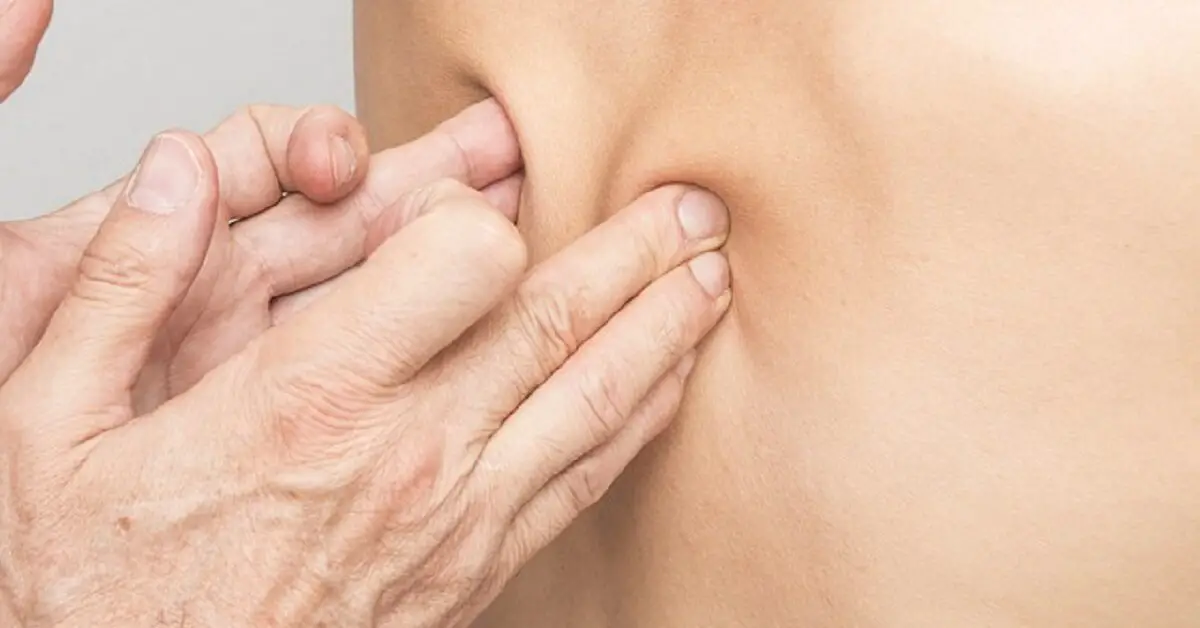
The Hua Tuo Jia Ji acupoints are a set of 34 acupressure/acupuncture points located on both sides of the spinal column from C1 to L5 (cervical-C, thoracic -T, and lumbar-L) (see illustration).
Spinal pressure points are more accessible to acupuncture techniques but practitioners claim they are also effective for acupressure manipulation.
Some of the Hua Tuo Jia Ji acupoints indicated for the treatment of musculoskeletal and neuropathic pain (Jiang et al., 2018) in the neck, shoulder, arm, and hand, include:
You may view a video demonstration of Hua Tuo Jia Ji point palpation here.
Hua Tuo Jia Ji (“lining of the spine at”) C4: Used for treating tension or pain in the neck, shoulder, and upper parts of the body
C5: Indicated for neck pain, snoring (in conjunction with C3), and problems in the pharynx or voice box, including hoarseness or loss of voice.
C6: Indicated for arm, hands, shoulder, and carpal tunnel syndrome.
C7: Skeletal health issues, such as arthritis, bone spurs, osteoporosis, and osteoarthritis.
T1: Neck and shoulder problems, colds, flu, and fever.
10. Tian Zong/”Celestial Gathering” (Small Intestine 11, SI 11)
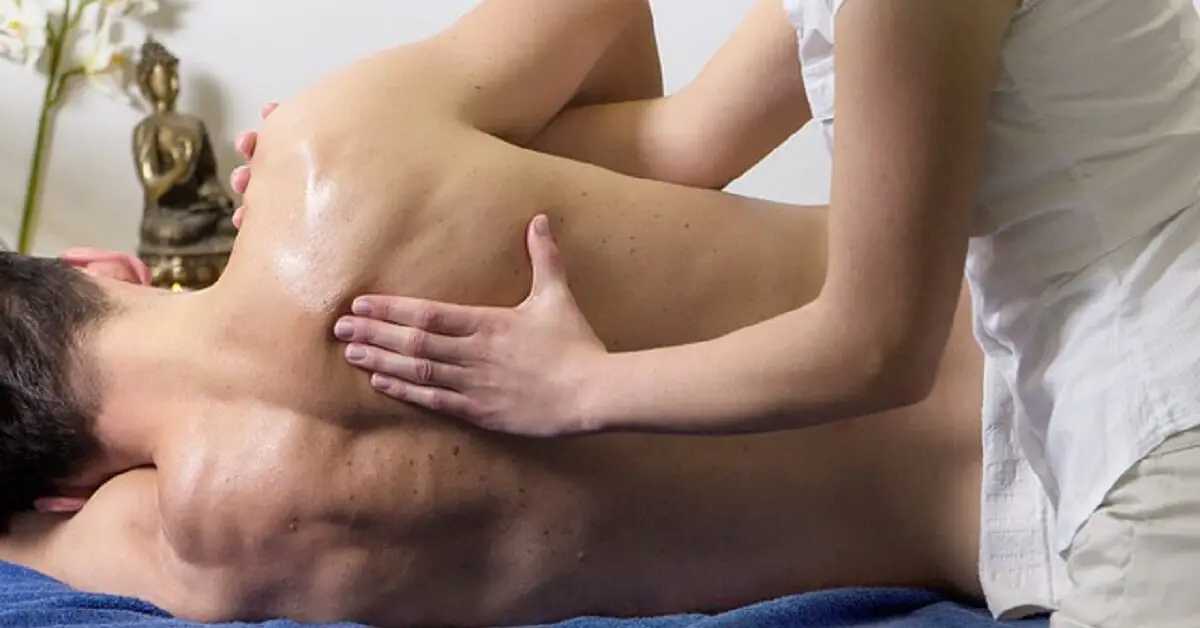
The Tian Zong (SI 11) pressure point is at the center of the scapula (see video demonstration).
The scapula is the pair of roughly triangular-shaped bones that articulate with the humerus (upper arm bone). You can feel them by reaching behind, over either shoulder to your upper thoracic region.
Tian Zong (SI 11) may relieve pain in parts of the body that radiate pain to the neck. These include breast pain, mastitis, shoulder, scapula, arm, and elbows (Gu and Shan, 2007), and jaw pain.
11. Jian Zhong Shu/”Central Shoulder Shu” (Small Intestine 15, SI 15)
Jian Zhong Shu (SI 15) is below the 7th cervical vertebrae (C7), lateral to (beside), and at the same level as the spinous processes of Da Zhui (GV 14) (see video demonstration).
Acupressure and acupuncture practitioners may target SI 15 to relieve pain in the neck, shoulder, and upper back (see Xu et al., 2012; Liang et al., 2012; Sun et al., 2019).
Stimulation of Jian Zhong Shu (SI 15) may also relieve cough, asthma, and hemoptysis.
12. Kun Lun/”Kunlun Mountains” (Bladder 60, BL 60 or Urinary Bladder 60, UB 60)
Kunlun (BL 60) is located directly behind the ankle. It lies in the depression between the lateral malleolus and the Achilles tendon. The point is exactly midway between the peak of the ankle bone and the outer edge of the Achilles tendon (see video demonstration)
[Note: The lateral malleolus is the prominent bone on the outer side of the ankle joint.]
Kunlun (BL60) stimulation relieves pain and rigidity in the neck, shoulders, arms, and back.
Practitioners use Kun Lun (also known as UB 60) for pain in the spinal column. Thus, it may be effective for treating pain in the lower back (Yu, 1988) and pain or numbness in the limbs.
Chang and associates (2012) reported that BL 60 helps manage pain due to inflammation.
Abbasoglu and colleagues (2015) reported that acupressure at BL 60 (or UB 60) reduced pain due to heel lancing in preterm infants.
Indications include headache and blurred vision.
Practitioners also believe that BL 60 may trigger labor. It is, therefore, contraindicated in pregnant women but used to induce labor.
13. Lie Que/”Broken Sequence” (Lung 7, LU-7)
Hold up a hand in front of your face: Li Que (Lung 7) is a point on the thumb side of your forearm below the crease of your wrist. It is just below and to the outer side of the point where you feel your pulse (see video demonstration).
Acupressure treatment at Lie Que (LU-7) alleviates pain and disorders of the head and neck, including neck stiffness or rigidity (Yao and Liu, 2013; Wang et al., 2019). It also helps manage conditions involving muscle twitching, Bell’s palsy, and lockjaw.
Lie Que stimulation relieves wrist pain, migraine headaches, facial paralysis, coughs, asthma, sore throat, chills, fever, and rhinitis.
Zhou and co-workers (2013) reported that Lie Que helps manage generalized anxiety disorder (GAD).
14. San Jiao 15 or Tian Liao/”Celestial Bone Hole” (Triple Heater 15, TH 15, or SJ 15)
San Jiao 15 (also known as Tian Liao, TH 15) is one of a group of pressure points located along the Triple Heater meridian (also known as Triple Warmer or Triple Burner meridian).
San Jiao 15 (SJ 15) or Tian Liao is on the shoulder just above the upper edge of the scapula toward the neck (see visual aid).
It is “midway between Jianjing (GB 21) and Quyuan (SI 13) on the superior angle of the scapula.”
Acupuncture at SJ 15 reduces neck stiffness and pain in the shoulder and elbow (Sun et al., 2019).
15. Jian Liao or San Jiao 14/”Shoulder Bone Hole” (Triple Heater 14, TH 14, or SJ 14)
San Jiao 14 or Jianliao (also known as Triple Warmer 14, TH 14) is another pressure point on the triple heater meridian.
It is located on the shoulder, on the depression at the back of the shoulder joint, below and behind the bulge of the shoulder blade acromion when the arm is lifted (see video demonstration).
The pressure point may help relieve pain in the neck and mobility issues in the shoulder, upper arm, and shoulder joint.
16. Naokong/”Brain cavity” (Gallbladder 19, GB 19)
Naokong (GB 19) is a neck pain pressure point (188) located on the back of the head, above Feng Chi (GB20), and at the same level as GV 17 (see English subtitled Chinese video demonstration).
Susana and colleagues (2021) identified Naokong (GB 19) as one of the acupressure points used in the treatment of cervical pain (neck pain) of benign origin.
Practitioners also use GB 19 for treating headaches, neck pain, and rigidity.
It may also relieve eye pain, tinnitus, vertigo, and seizures
17. Jian Wai Shu/”Outer Shoulder Shu” (Small Intestine 14, SI 14)
Jianwaishu (SI 14) is on the lower border of the spinous process of the first thoracic vertebra (T1).
T1 coincides with the location of the acupoint Taodao (GV 13) (see video demonstration starting at 6:49 min).
SI 14 treats pain and stiffness of the neck in combination with other acupoints (Greenwood, 2021).
Practitioners also recommend Jianwaishu for treating pain in the shoulder, scapula, and back (Ben-Arie et al., 2020).
Common causes of neck pain
Neck pain associated with muscle tension, stiffness, spasms, strain, and inflammations may be due to:
- Emotional problems (stress and anxiety)
- Chronic poor posture,
- Bruising, trauma, or injury
- Circulatory disturbances
- Various conditions of the tendons, ligaments, bones, muscles, joints, and nerves
- Age-related degeneration of the cervical spine
Poor posture
Chronic poor posture may be due to a sedentary lifestyle or occupational factors. Spending hours sitting or standing while assuming a slouched or hunched posture that places strain on the supportive structures of the neck and cervical spine may lead to chronic neck pain.
People who spend hours in front of a computer screen and those who spend hours looking down at their phone screen may also develop neck pain issues.
Neck strain and sprain that causes pain, soreness, and stiffness could result from sleeping overnight in an awkward position.
Others may experience chronic neck pain following physical trauma.
Overweight and lack of physical activity
Being overweight and lack of physical exercise contribute significantly to body aches, pains, sprains, strains, and stiffness often attributed to poor posture.
A program to increase physical activity and a diet plan to lose weight may improve physical well-being.
You may find out whether you are overweight by using our calculator to estimate your Body Mass Index (BMI) here.
Fun physical activities that help boost your metabolism and increase your chances of successful weight loss include skateboarding and trampolining.
You may also engage in strength training exercises, such as squats and push-ups, to improve your posture by increasing muscle mass and tone
Health conditions
Common health conditions associated with neck pain include:
- Infections (meningitis)
- Fibromyalgia
- Myofascial pain syndrome (read more about myofascial pain syndrome and trigger points here)
- Tumors
- Bone spurs
- Cervical osteoarthritis
- Degenerative disc disease and cervical herniated disc
- Narrowing of the spinal canal (cervical foraminal stenosis) or narrowing of the foramen (cervical foraminal stenosis)
- Spondylolisthesis
Some of these conditions may be associated with nerve compression-induced pain.
Age-related degeneration
While anyone can experience neck pain and discomfort due to poor posture, people who exercise less, older people, and those with certain health conditions are more susceptible.
Generally, older people are more likely to suffer sprains, strains, and other conditions that cause neck pain. Aging is associated with loss of muscle and tone, wearing of the joints, weakening of the skeletal and cartilage structure, and nerve damage.
However, younger people are also not exempt from these problems.
Nutritional deficiency
Nutritional deficiencies may cause neck pain. Vitamin D deficiency is associated with worsening of back and neck pain, and muscle spasms.
What are pressure points (acupoints)?
The concept of pressure points comes from the centuries-old practice of acupressure in Traditional Chinese Medicine (TCM).
Acupressure proposes that you can activate healing physiological responses (known as Qi or Chi) through manual stimulation of specific pressure points (acupoints) located along meridian pathways.
Meridians are pathways in the body along which healing signals flow.
According to acupressure/acupuncture theorists, the body has 12 cutaneous (located on the skin) and subcutaneous (under the skin) meridian pathways linked through sub-meridians with specific tissues and organs, such as the lungs, intestine, spleen, gallbladder, kidney, and liver.
Pressure points (or acupoints) are points along the meridians where pressure, compression, massage, or needle insertion may reduce pain at the local site, another part of the body (Mehta et al., 2016), or help treat specific ailments.
According to practitioners, activation of acupoints through precise stimulation has healing effects.
Mehta and associates noted that acupressure involves applying pressure to the acupoints with the hand, palm, fingers, knuckles, thumb, elbows, feet, or various devices (including elastic bands).
Ancient practitioners used various objects, including pebbles (Bian stones).
The process of stimulating pressure points to relieve pain and improve health is known as pressure point therapy or acupressure therapy.
Acupuncturists also target acupoints for therapeutic purposes.
Acupressure vs acupuncture?
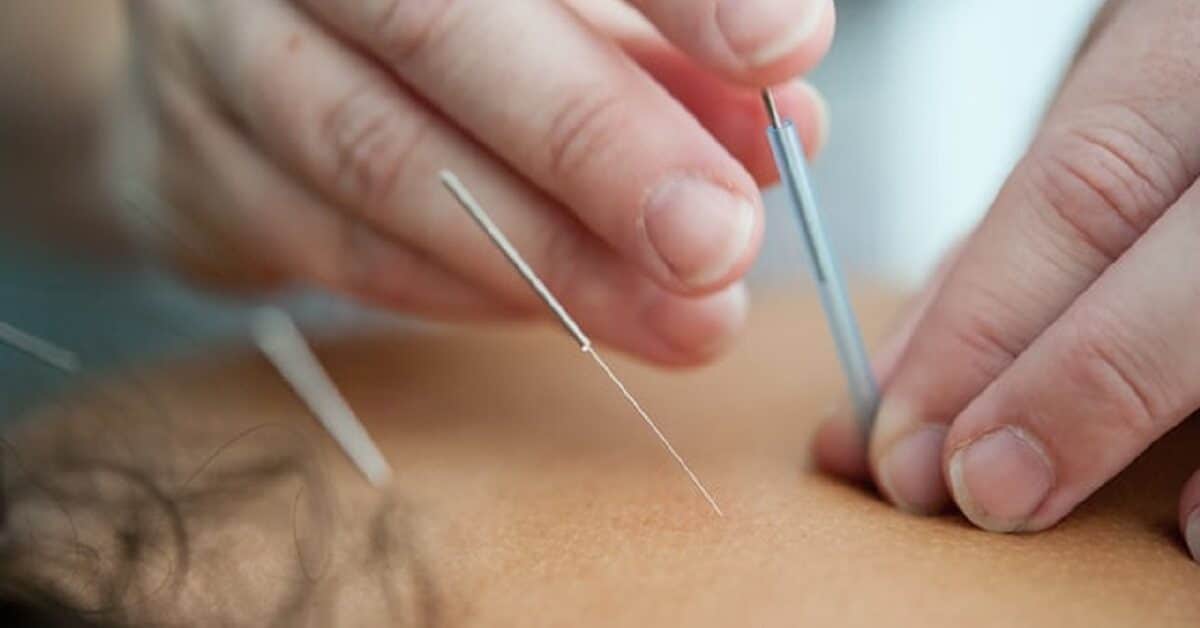
Acupuncture and acupressure share the same pressure points. Both practices recognize 12 primary meridians.
Acupoints are located on the meridians.
Practitioners have identified more than 400 acupuncture/acupressure points in the body.
The 12 main meridians include:
- Lung
- Large intestine
- Stomach
- Spleen
- Heart
- Small intestine
- Bladder
- Kidney
- Pericardium
- Triple Energizer
- Gallbladder
- Liver
The main difference between acupressure and acupuncture is that while acupressure involves the application of pressure with flat or blunt objects, acupuncture involves inserting long and thin needles or pins into the body to activate the acupoints.

